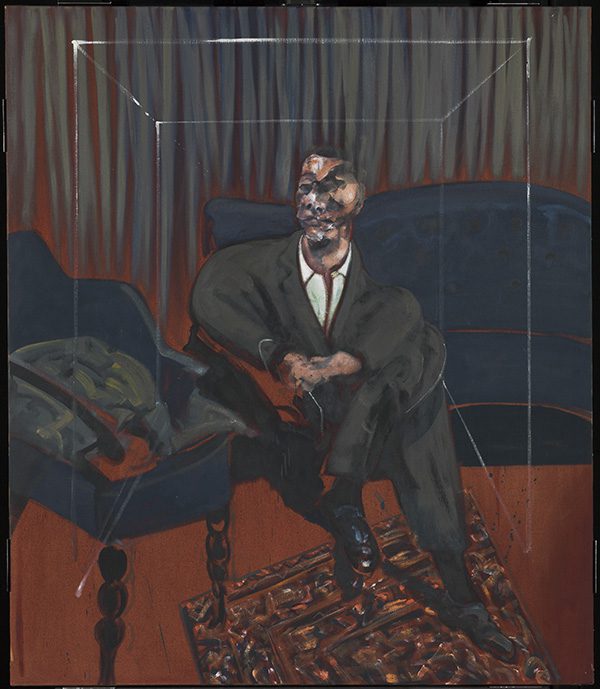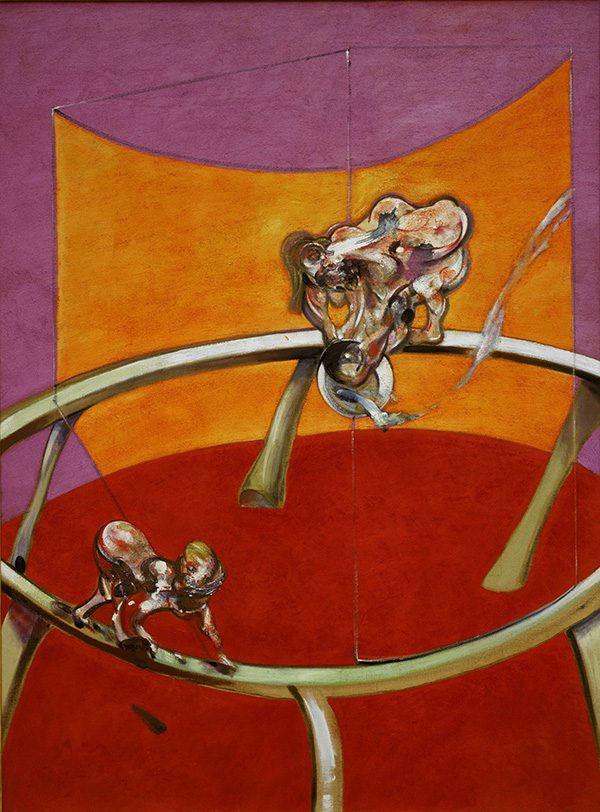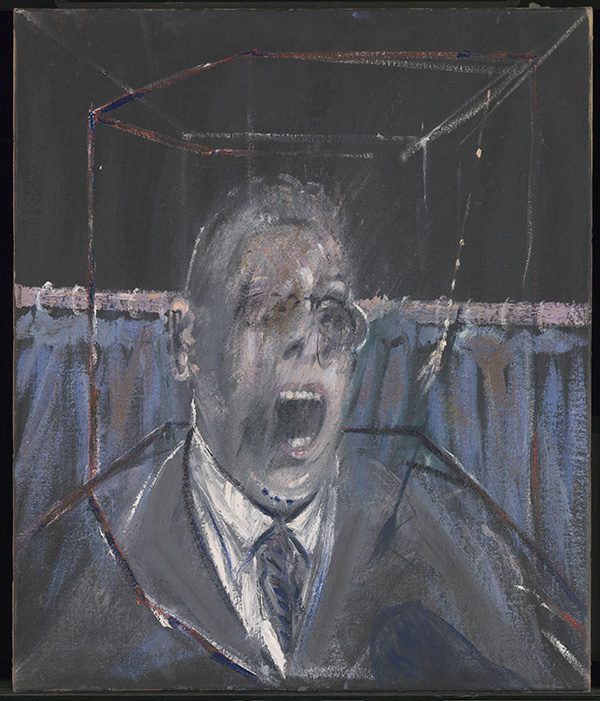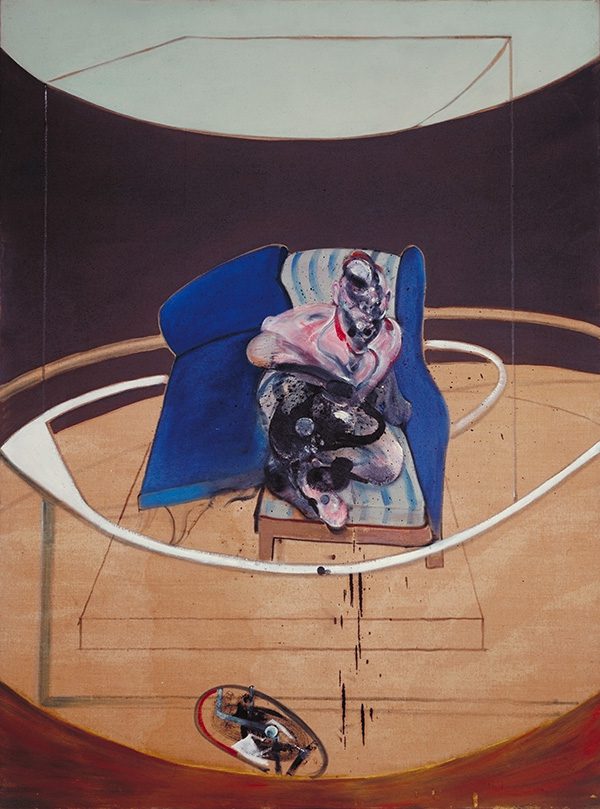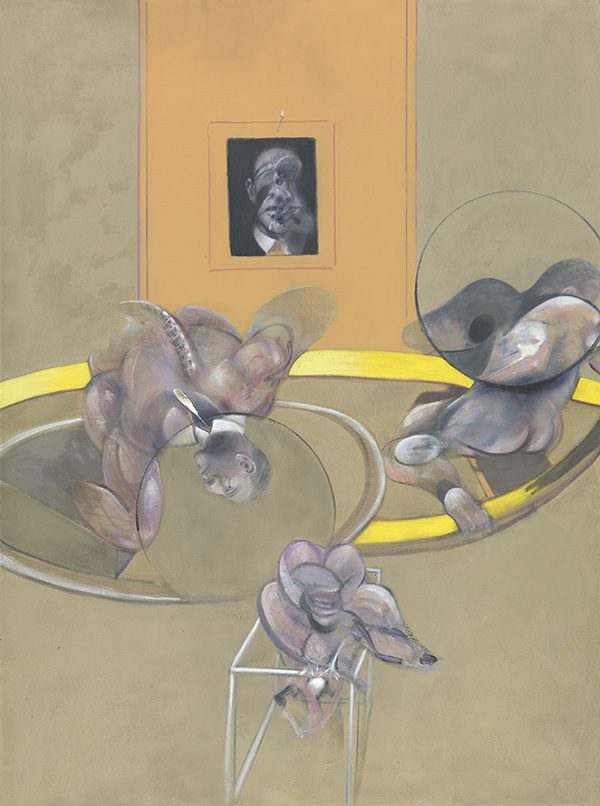ART-PRESENTATION: Francis Bacon-Invisible Rooms
 Francis Bacon produced some of the most iconic images of wounded and traumatized humanity in post-war art. Borrowing inspiration from Surrealism, film, photography, and the Old Masters, he forged a distinctive style that made him one of the most widely recognized exponents of figurative art in the ‘40s and ‘50s.
Francis Bacon produced some of the most iconic images of wounded and traumatized humanity in post-war art. Borrowing inspiration from Surrealism, film, photography, and the Old Masters, he forged a distinctive style that made him one of the most widely recognized exponents of figurative art in the ‘40s and ‘50s.
By Dimitris Lempesis
Photo: Tate Liverpool Archive
Many Francis Bacon works feature an architectural, ghost-like framing device around his subjects. The exhibition “Francis Bacon: Invisible Rooms” at Tate Liverpool feature 30 paintings alongside a group of rarely seen drawings and documents including some of Bacon’s most powerful works, surveying the variety of Bacon’s compositions united by this common motif. Taking inspiration from a seminal essay by French philosopher Gilles Deleuze, “Francis Bacon: The Logic of Sensation” (1981), the exhibition highlights the role of Bacon’s approach to space, which Deleuze interpreted as one of the defining forces of his work. An element introduced by the artist in the 1930s, Bacon used a barely visible cubic or elliptic cage around the figures depicted to create his dramatic compositions. It is these imaginary chambers that emphasise the isolation of the represented figures and bring attention to their psychological condition; the act of placing the sitters in ‘invisible rooms’ guides the focus of attention towards the complex human emotions that are felt but can’t be seen. The exhibition traces the development of this architectural structure throughout his career; from the first indications of room-spaces in early works including his first truly original work “Crucifixion” (1933). The work that launched Bacon’s reputation when it was exhibited in London in the final weeks of World War II, “Three Studies for Figures at the Base of a Crucifixion” (c. 1944), this work established many of the themes that would occupy the rest of his career, namely humanity’s capacity for self-destruction and its fate in an age of global war. The exhibition also includes: “Man in Blue IV” (1954), “Chimpanzee” (1955) and “Untitled (Kneeling Figure)” (c. 1982). The exhibition demonstrates the ongoing development of the motif, which Bacon tested in different ways from its inception. A period of experimentation on paper in the late 1950s and early 1960s gave way to a greater spatial complexity in the late 1960s, 70s and 80s, where the cubic cages were transformed into theatrical spaces, demonstrated in 1967’s Triptych Inspired by T.S. Eliot’s “Sweeney Agonistes”.
Info: Curators: Kasia Redzisz, Lauren Barnes & Ina Conzen, Tate Liverpool, Albert Dock, Liverpool Waterfront, Liverpool, Duration: 18/5-18/9/16, Days & Hours: Daily 10:00-18:00, www.tate.org.uk
